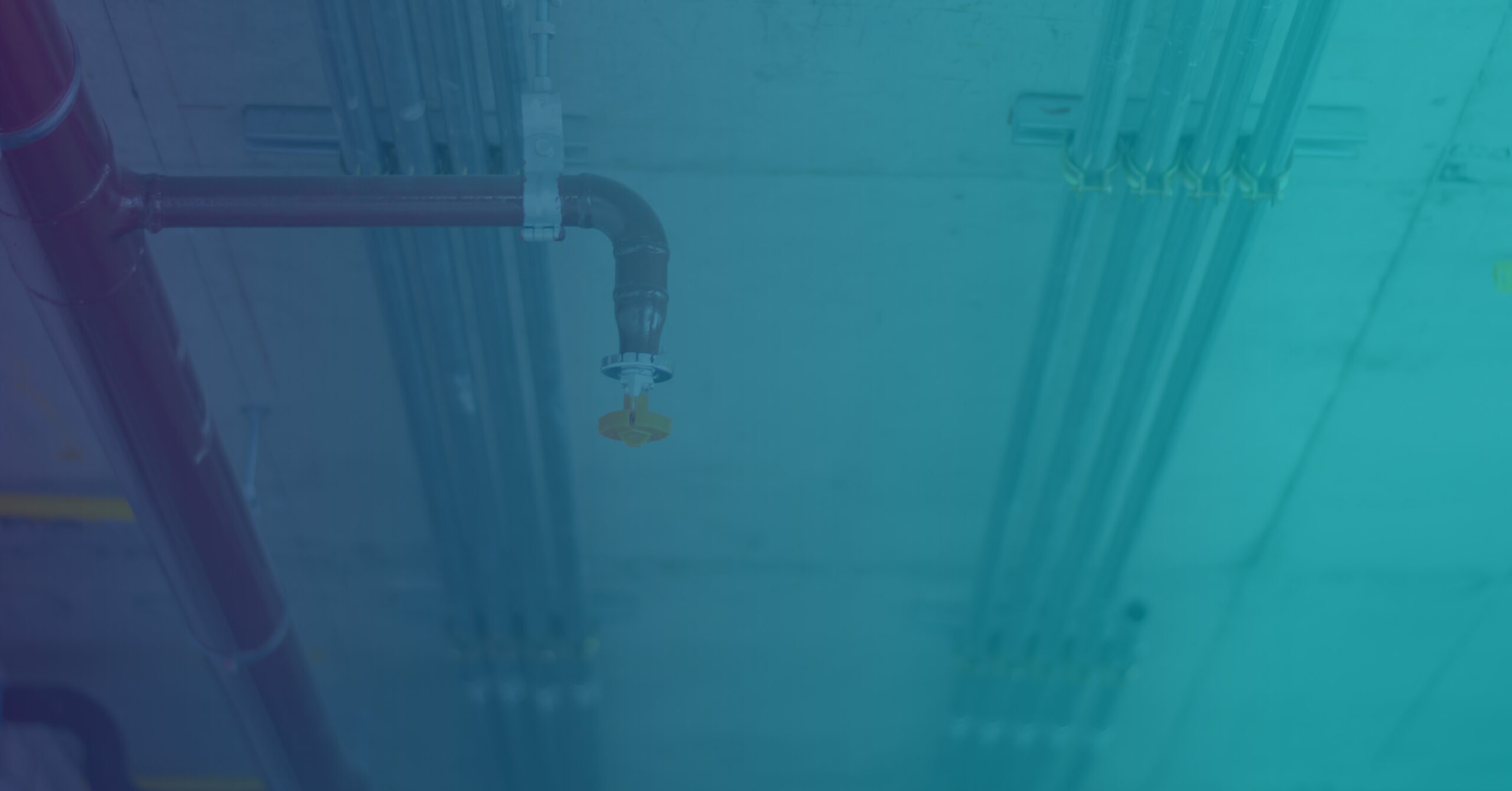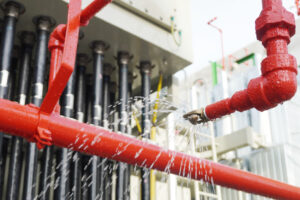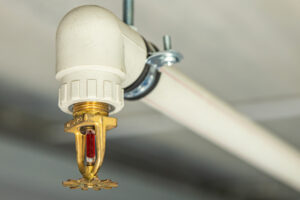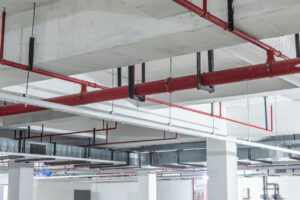
Essential Practices for Fire Sprinkler System Maintenance: A Comprehensive Guide
February 26, 2024
A well-functioning fire sprinkler system is paramount for safeguarding lives and property during emergencies. In this comprehensive guide, we will delve into the importance of basic fire sprinkler system upkeep and preventative sprinkler system maintenance to avoid failures in these critical systems, highlighting key components and routine sprinkler inspections, as well as DIY tips.
I. The Importance of the Air Compressor
One of the key sprinkler system components is the air compressor. The air compressor plays a pivotal role in maintaining the right pressure levels within the system, ensuring proper water distribution. A properly maintained compressor is key for sprinkler system failure prevention, as it accomplishes key tasks such as:
Pressure Regulation
The meticulous regulation of pressure within a fire sprinkler system by the air compressor is paramount to its efficient operation. Proper pressure serves as the linchpin for the uniform distribution of water across the entire coverage area.
The air compressor acts as a guardian, maintaining the ideal pressure levels necessary for each nozzle to dispense water evenly.
Moreover, when it comes to fire protection, the significance of consistent pressure cannot be overstated. In an emergency, every second counts, and a flawlessly regulated fire sprinkler system can make the difference between containment and escalation. Irregular pressure might compromise the effectiveness of the system, putting lives and property at risk.
Preventing Pipe Freezing
As the temperatures drop in colder climates, the role of the air compressor transforms into a vital defense mechanism against the freezing of water within the pipes. The consequences of frozen pipes extend far beyond inconvenience – they can lead to pipe bursts and catastrophic system failure.
When water freezes, it expands, exerting immense pressure on the pipes. The robust action of the air compressor prevents this freeze-thaw cycle from wreaking havoc on your fire sprinkler system. Regular checks on the functionality of the air compressor, especially as winter approaches, are imperative. This preventive measure ensures that the system remains resilient against the biting cold, preserving the integrity of pipes and averting potential disasters.
Enhanced System Performance
The air compressor is not merely a functional component but a key player in elevating the overall performance of the fire sprinkler system. Its regular maintenance becomes a proactive strategy to protect the system against potential malfunctions.
Through routine inspections and meticulous servicing, the air compressor operates at its peak efficiency. This reduces the risk of unexpected malfunctions and breakdowns, providing a reliable and uninterrupted water supply to your property. By investing in the care of the air compressor, you are, in essence, extending the lifespan of the entire fire sprinkler system.
In short, the air compressor stands as a sentinel, diligently ensuring the optimal performance and longevity of your fire sprinkler system. Its role in pressure regulation, prevention of freezing, and contribution to overall system efficiency highlights the need for vigilant maintenance practices. Recognizing and appreciating the importance of the air compressor is a fundamental step toward a robust and resilient fire sprinkler system, capable of fulfilling its vital roles in fire protection.
II. Low Point Drains on Fire Sprinkler Systems: The Freezing Threat
In addition to the air compressor, another critical aspect of preventing fire sprinkler system failure is the incorporation of low point drains. These drains serve a crucial role in ensuring that water doesn’t accumulate in the system, especially during colder temperatures. Below are some reasons the low point drains are essential.
Freeze Prevention
In the unforgiving grasp of winter, the threat of frozen pipes looms large over fire sprinkler systems. Water left stagnant within the pipes during the cold season can undergo a perilous transformation—it freezes, expanding and exerting immense pressure on the pipe walls. The result? Catastrophic pipe bursts that can wreak havoc on your entire fire sprinkler system. Enter low point drains—strategically positioned at the system’s lowest points to combat this very threat.
Low point drains play a pivotal role in safeguarding your fire sprinkler system from the costly consequences of freezing. By providing an escape route for residual water, they ensure that no liquid remains within the pipes to succumb to the icy grip of winter. The proactive drainage facilitated by these drains serves as a preventative measure, preserving the structural integrity of your system and sparing you from the expenses associated with pipe repairs and replacements.
Avoiding Water Hammer
Beyond freeze prevention, low point drains serve as guardians against another potential peril—water hammer. This phenomenon occurs when water flow suddenly stops, creating a shockwave that reverberates through the pipes. This shockwave, akin to a mini explosion within the system, subjects it to significant stress, potentially leading to leaks and, in extreme cases, system failures.
Low point drains act as strategic shock absorbers, dissipating the energy generated during water flow cessation. By allowing a controlled and gradual drainage process, these drains effectively eliminate the abrupt pressure changes that trigger water hammer. This not only protects the system’s structural integrity but also ensures a smoother, quieter operation that extends the lifespan of various components.
Routine Maintenance Checks
The effectiveness of low point drains hinges on their unimpeded functionality, making routine maintenance checks an imperative aspect of fire sprinkler system care. Over time, debris, sediment, or even the occasional rogue pebble may find its way into the drainage path, hindering the efficient flow of water. Regular inspections and cleaning sessions become the first line of defense against such hindrances.
By incorporating routine maintenance checks into your seasonal or annual fire sprinkler system care regimen, you can identify and address issues with low point drains promptly. Clearing any accumulated debris ensures that the drainage process remains unhindered, fortifying your system against both freezing and water hammer risks. This proactive approach not only preserves the integrity of the low point drains but contributes significantly to the overall robustness of your fire sprinkler system.
In the grand scheme of system longevity and functionality, the combined efforts of low point drains and regular maintenance checks stand as a testament to proactive care—a commitment that pays dividends in preserving the health, efficiency, and cost-effectiveness of your fire sprinkler system.
III. Fire Sprinkler System Maintenance: A Holistic Approach
To ensure the longevity and effectiveness of your fire sprinkler system, adopting a holistic maintenance approach is crucial. Below are key practices to incorporate into your routine.
Routine Inspections
In the realm of fire sprinkler system maintenance, routine inspections stand as the unwavering backbone of preventive care. The adage “prevention is better than cure” holds particularly true, emphasizing the critical importance of regular, thorough examinations to ensure the longevity and efficiency of your system.
Conducting these inspections is not merely a perfunctory task; it is an authoritative stance against potential failures. Delve into every nook and cranny of your system, leaving no component uninspected. Pay meticulous attention to pipes, valves, heads, and the control panel—each integral piece of the intricate puzzle that is your fire sprinkler system.
Look for telltale signs of wear and tear, corrosion, or any visible damage that might compromise the system’s functionality. Identifying and addressing these issues at their nascent stages through routine inspections is akin to preemptive medicine for your fire sprinkler system, ensuring it remains robust and resilient against unforeseen challenges.
Key Fire Sprinkler System Components
Understanding the intricacies of your fire sprinkler system is not a luxury but a necessity for effective maintenance. Consider it a profound insight into the heartbeat of your system’s functionality. Focus your inspections on key components—pipes, valves, heads, and the control system—for a comprehensive assessment of your system’s health.
Inspecting pipes ensures that water flows unimpeded, valves operate seamlessly, heads dispense water evenly, and the control system orchestrates the entire operation flawlessly. Any compromised component within this symphony of elements can lead to a cascading failure, jeopardizing the effectiveness of the entire system.
Promptly replace any damaged or worn-out components discovered during inspections. This proactive approach not only mitigates the risk of immediate failures but also safeguards your system against potential domino effects, where one compromised component triggers a chain reaction of issues.
Fire Sprinkler System Upkeep
For those with fire sprinkler systems serving a fire protection function, meticulous upkeep transcends from imperative to non-negotiable. The stakes are elevated, and the reliability of your system becomes paramount in safeguarding lives and property during emergencies.
Ensure that every fire sprinkler head is free from obstructions, corrosion, or damage. These heads are the frontline defenders in the event of a fire, and any compromise in their functionality could have dire consequences. Regularly test the entire system in accordance with local regulations, validating its readiness to respond effectively to emergencies.
This meticulous upkeep isn’t just a regulatory compliance; it’s a testament to your commitment to safety. A well-maintained fire sprinkler system is a reliable guardian, ready to spring into action when seconds count the most.
IV. DIY Fire Sprinkler System Maintenance Tips
While professional inspections are essential, there are several maintenance tasks that property owners can perform themselves. Below are some DIY tips to keep your fire sprinkler system in top-notch condition.
Clean and Adjust Sprinkler Heads Regularly
Cleaning and adjusting sprinkler heads is a proactive measure that pays dividends in the precision of water distribution. Over time, the insidious accumulation of dirt and debris on these heads can disrupt the uniformity of water dispersal, leading to uneven coverage across your property. Engaging in periodic cleaning sessions ensures that each nozzle operates optimally, contributing to the health and vibrancy of your surroundings.
Adjusting the heads is equally crucial, as it allows you to fine-tune the direction and range of water spray. This customization ensures that every corner of your property receives the appropriate amount of water, promoting healthy growth while minimizing water wastage. Additionally, checking for damaged or clogged nozzles during these sessions and promptly replacing them guarantees the continued efficiency of your fire sprinkler system.
Inspect and Repair Leaks
Leaks in your fire sprinkler system are not just minor inconveniences; they can significantly undermine the system’s efficiency and lead to unnecessary water wastage. Regular inspections for signs of leaks in pipes, valves, or connections are a preemptive strike against these silent saboteurs.
Addressing leaks promptly is a dual-purpose endeavor. Firstly, it prevents the wastage of water, a precious resource in any setting. Secondly, it safeguards the entire system from potential damage that may arise from prolonged exposure to leaking water. By identifying and repairing leaks in their early stages, you not only conserve resources but also prolong the life and effectiveness of your fire sprinkler system.
Monitor Water Pressure
Keeping a vigilant eye on water pressure within the system is akin to monitoring the vital signs of your fire sprinkler system. Abnormal pressure levels can be indicative of underlying issues, whether with the air compressor or other integral components. Fluctuations in pressure should not be dismissed, as they can serve as early warnings of potential malfunctions.
Regular monitoring allows you to identify pressure anomalies promptly, providing an opportunity to consult a professional for thorough diagnostics. Addressing these issues in their infancy prevents the escalation of problems that could compromise the overall functionality of your fire sprinkler system. In essence, monitoring water pressure is a proactive measure that ensures the continued health and efficiency of your system.
Clear Debris from Low Point Drains
Ensuring the unobstructed functionality of low point drains is a seemingly simple yet profoundly impactful task. Clearing debris or sediment that may accumulate in these drains is a preemptive strike against potential freezing and water hammer issues.
Blocked low point drains can impede proper drainage, creating a conducive environment for water freezing during colder months. By routinely clearing these drains, you fortify your system against the damaging effects of frozen pipes. Additionally, the prevention of water hammer—a phenomenon that can stress the system and lead to leaks—is another compelling reason to make this task a regular part of your maintenance routine.
Ensuring precision in water distribution, preventing leaks, vigilantly monitoring system indicators, and maintaining the integrity of drainage are not just routine tasks; they are imperative elements of effective fire sprinkler system management. By consistently executing these measures, you establish a systematic approach that goes beyond basic maintenance.
Ensure Your Fire Sprinkler System Is Ready When You Need It
Maintaining a reliable fire sprinkler system requires a proactive approach to preventive maintenance and understanding basic sprinkler system care. The combination of proper air compressor function, the presence of low point drains, routine inspections, and DIY care ensures that your system operates efficiently year-round. By understanding the key components and implementing these maintenance practices, you not only protect your property from potential failures but also contribute to the overall safety and well-being of your environment. Fire sprinkler system maintenance is not just a task; it’s a responsibility that pays dividends in safeguarding what matters most.
Need help ensuring your sprinkler system is well-maintained and ready for action? Just request a service call today and let one of our experts help you stay prepared—and protected.


